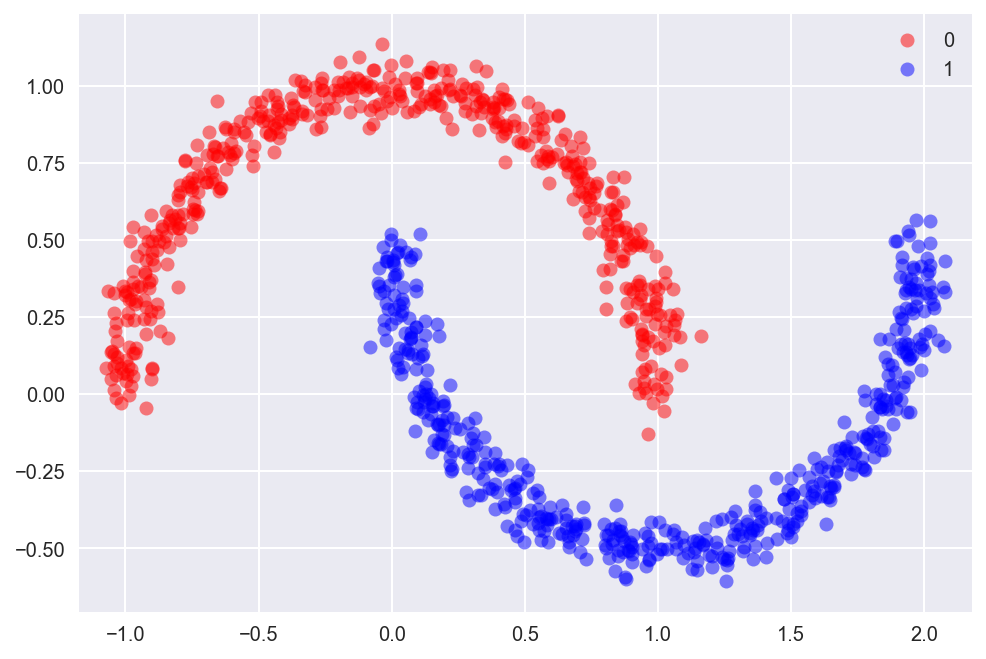Machine Learning & Half Moon Project
This was our first Machine Learning assignment. Machine Learning is something that I was (and still am) super excited about. Basically, the algorithm 'learns' something, and can then apply it in other situations.
Learning & Neurons
This was the toughest concept to learn (ha). We started with a Neuron, similar to the neurons in our brains. The neuron can trigger (yes/no) based on a series of inputs, in our case two inputs. The equation for whether or not the neuron triggers is SUMMATION(Weight(n) * Input(n)) > threshold. Each input is weighted differently, and the weights are what we can change to 'train' the neuron. We use this equation: ΔWeight = learningSpeed * (target - output) * input. For example, if we start with a speed of 0.2, an input of 1, a weight of 0.5, and a target of 0, the weight would change by -0.2 (0.2 * (1 - 0) * 1). Now, with a weight of 0.3, repeat the process. Once each input returns the desired output, the best weights have been found.
Application: Half Moon Project
 The Half Moon Project is a great application for the machine learning algorithm we learned. The goal is to separate two half-moons by a linear line.
The Half Moon Project is a great application for the machine learning algorithm we learned. The goal is to separate two half-moons by a linear line.
In the example to the right, these half-moons cannot possibly be separated by a linear line, due to the fact that the distance between them is negative. However, if the distance is positive, the moons can be separated, as seen in the second picture.
Learning & Neurons
This was the toughest concept to learn (ha). We started with a Neuron, similar to the neurons in our brains. The neuron can trigger (yes/no) based on a series of inputs, in our case two inputs. The equation for whether or not the neuron triggers is SUMMATION(Weight(n) * Input(n)) > threshold. Each input is weighted differently, and the weights are what we can change to 'train' the neuron. We use this equation: ΔWeight = learningSpeed * (target - output) * input. For example, if we start with a speed of 0.2, an input of 1, a weight of 0.5, and a target of 0, the weight would change by -0.2 (0.2 * (1 - 0) * 1). Now, with a weight of 0.3, repeat the process. Once each input returns the desired output, the best weights have been found.
Application: Half Moon Project
 The Half Moon Project is a great application for the machine learning algorithm we learned. The goal is to separate two half-moons by a linear line.
The Half Moon Project is a great application for the machine learning algorithm we learned. The goal is to separate two half-moons by a linear line.In the example to the right, these half-moons cannot possibly be separated by a linear line, due to the fact that the distance between them is negative. However, if the distance is positive, the moons can be separated, as seen in the second picture.

Comments
Post a Comment